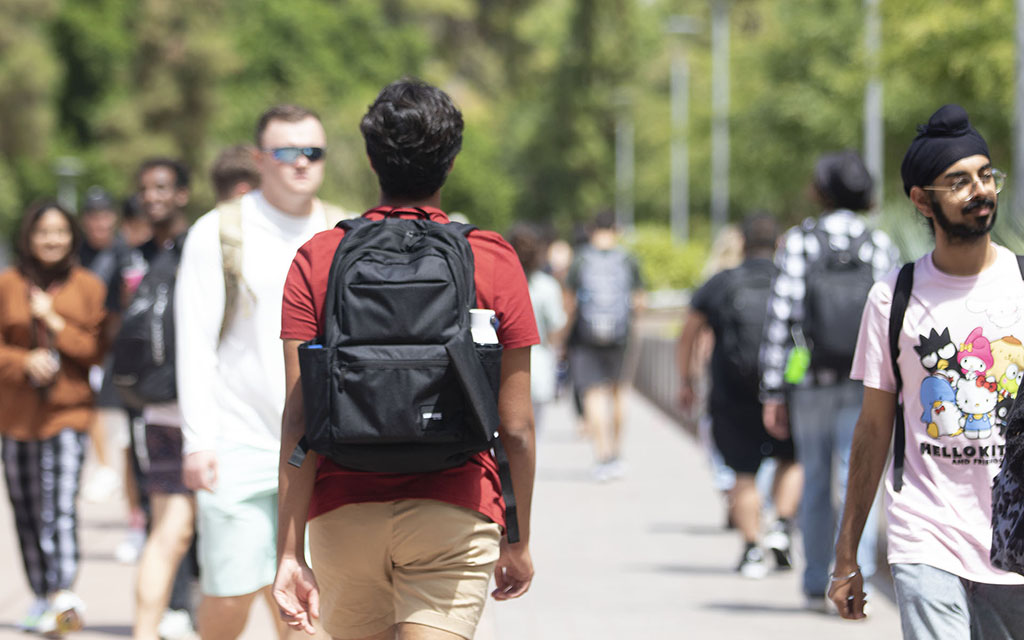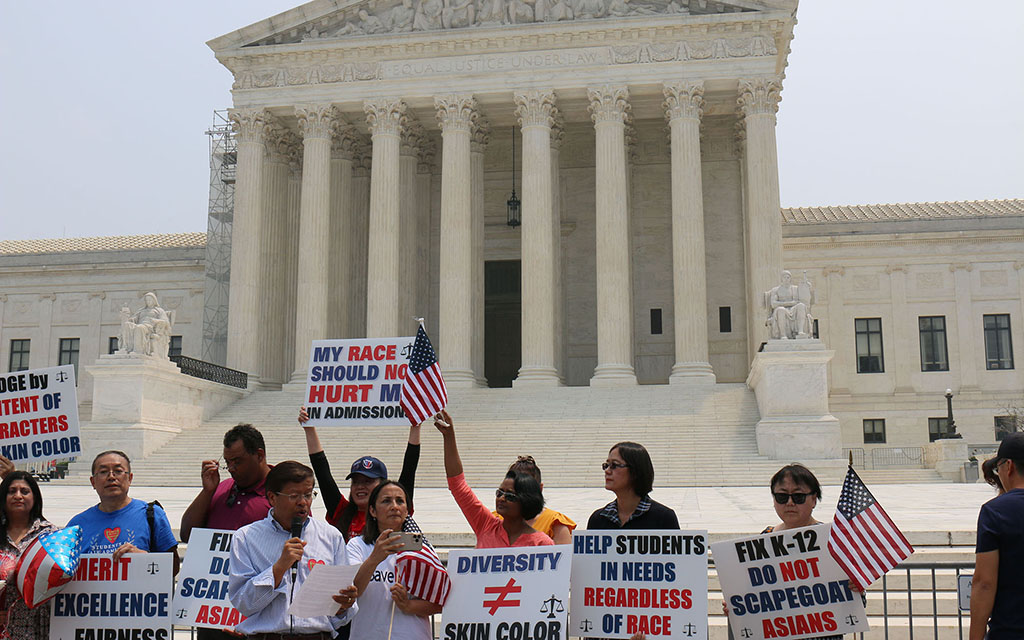
Students walk across Arizona State University’s Tempe campus in this 2022 photo. A new Biden administration plan would forgive up to $1 billion in student loan debt for up to 20,000 Arizona residents, after the Supreme Court last month struck down a much more ambitious debt-relief plan. (File photo by Sophie Oppfelt/Cronkite News)
WASHINGTON – More than 20,000 Arizona residents would see $1 billion in student debt erased under a Biden administration plan unveiled just two weeks after the Supreme Court struck down a previous debt-forgiveness plan.
The latest proposal is an update of the Department of Education’s Income Driven Repayment plans, that capped monthly debt payments at a portion of income and forgave whatever debt remained after 20 or more years of regular payments. Nationwide, as many as 804,000 borrowers could save just under $39 billion.
It comes as a pandemic-era moratorium on student loan payments is set to expire in October.
The new policy, announced Friday by President Joe Biden, was hailed by student-debt groups still reeling from the Supreme Court’s ruling two weeks earlier.
“This isn’t a handout,” said Cody Hounanian, executive director of the Student Debt Crisis Center. “These are people who have been in the system for decades.”
Democrats in Arizona’s congressional delegation also welcomed the move. But Republicans from the state called the administration’s move “unconstitutional” and “tyrannical.”
“The White House has concocted another scheme to circumvent the (Supreme) Court’s decision and the rule of law,” Rep. Debbie Lesko, R-Peoria, said in a prepared statement. “Americans who didn’t go to college, or worked hard to pay off their loans, should not have to subsidize other peoples’ college tuitions.”
But Hounanian and Mark Kantrowitz, a student financial aid consultant, said Friday’s announcement fixes problems with the administration of the decades-old IDR debt program that was congressionally approved as part of the Higher Education Act.
“These borrowers are entitled to forgiveness. It didn’t happen automatically, and the Biden administration is simply fixing it,” Kantrowitz said.
Under the Income Driven Repayment program, borrowers who had trouble repaying student loans could have their monthly payment set according to their income, generally at 10% of income. The balance is forgiven after 20 or 25 years of regular payments, depending on the type of loan they had.
But Kantrowitz said some loan servicers had not kept track of qualified payments, leaving borrowers in the dark about their loan forgiveness status. When it announced its update to the IDR in April 2022, the Education Department said that a miscalculation of payments caused some borrowers to lose “hard-earned progress toward loan forgiveness,” leading them to pay more than they should have.
The White House also announced that it will be increasing the amount of protected income this summer, from the current 150% of the poverty level to 225%. Beginning in July 2024, the share of income that an eligible borrower has to pay will be lowered to as little as 5% and the years of payment before a debt is forgiven could be as few as 10 years.
Until then, the department will continue to notify IDR borrowers who qualify for debt forgiveness, with debt discharges beginning 30 days after individuals have been notified of their qualification.
The new IDR plan is just one of several efforts the White House has made to soften the blow of the Supreme Court’s June 30 decision in Biden v. Nebraska, which overturned an administration plan that would have forgiven $430 billion in student debt relief for held by more than 40 million people nationwide. That plan would have saved an estimated 916,000 people in Arizona about $32.6 billion.
Under that plan, anyone making $125,000 or less could have received up to $10,000 in student loan debt relief, while those who had received Pell Grants for their education could have received up to $20,000. But the court, in a 6-3 decision, said the Education Department did not have the authority to enact that relief. Only Congress has such authority, the court said.
The same day that the court ruled, Biden responded with an announcement that the Education Department had started a formal rulemaking process to map out new student debt relief under the Higher Education Act. The first public hearing under that process was held Tuesday and it will be followed by rulemaking sessions.
The White House also announced an “on ramp” to repayment for the year after payments resume in October. During that year, missed student payments will not be reported to credit-reporting agencies.
Kantrowitz has little hope that the plan being developed in the formal rulemaking process will be any more successful than the original debt relief plan.
“It’s going to be a false hope,” he said. “In order for them to move forward with this plan, they have to change the regulations, which is a long process. And even if they do that, it opens up the possibility of a lawsuit.”
Hounanian is more optimistic, saying experts have told the president that he has the authority to provide debt relief. But he worries that the rulemaking process may take too long.
“He’s (Biden) chosen a process which could take upwards of a year,” Hounanian said. “We’re going to see a lot of borrowers thrown back into the system before they get the relief that they really need.”


